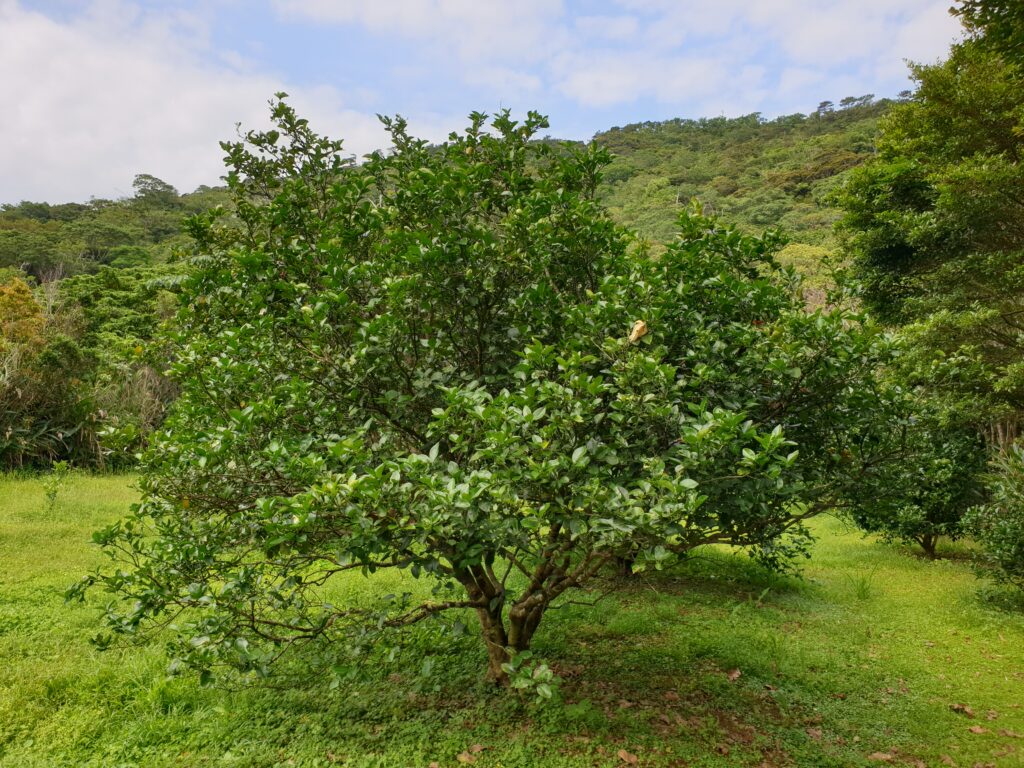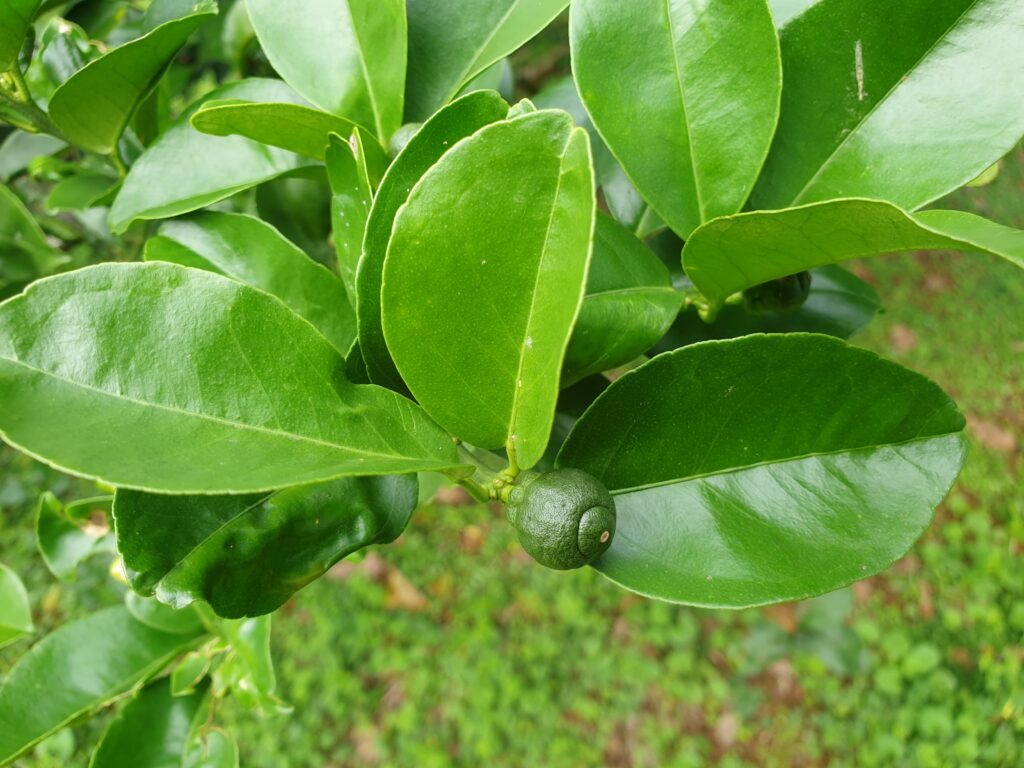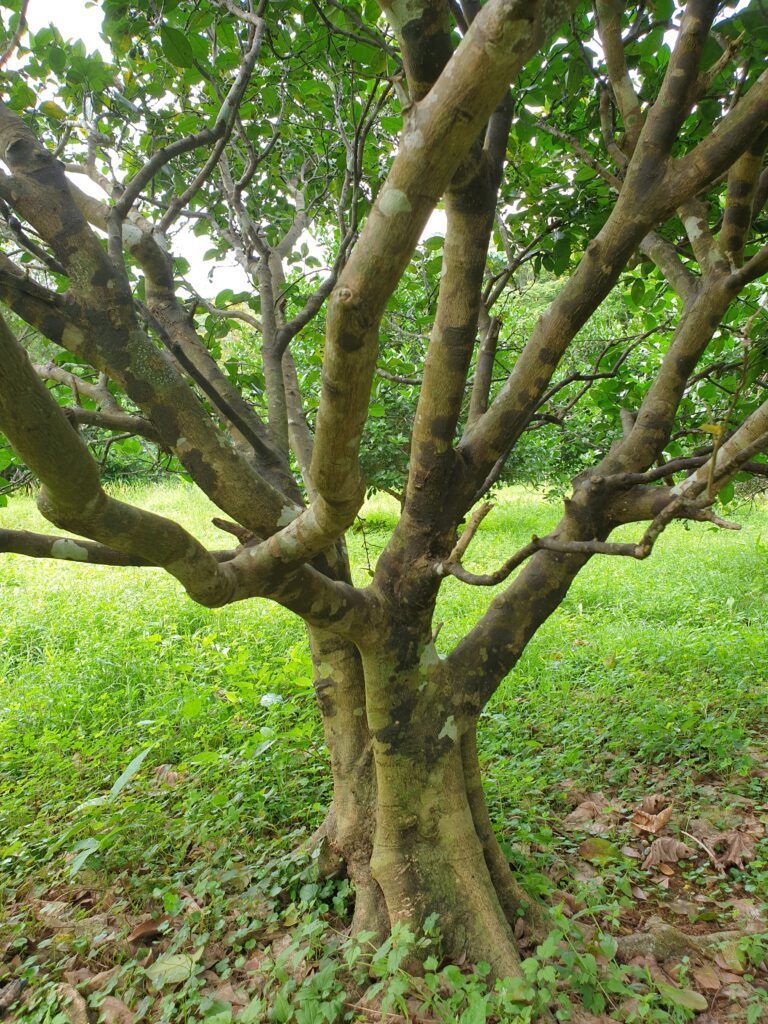Tanaka (1957) mentions this species as cultivated on the island of Amami Oshima in Kagoshima Prefecture in the southern part of Japan. He assumed that the species came to mainland Japan from the southern islands. The tree is very prolific and resistant to disease and pests (Michinoshima Farm, 2021). Tanaka further reported that Rokugatsu-mikan has a remarkable resemblance of the large fleshy calyx to C. aurantium ‘Zadaidai’, from which it differs by the absence of a petiole wing and a distinct areole at the apex of the fruit. The fruit is easily peelable, and Tanaka reported that the taste is sweeter than that of the common bitter orange, but the fruit is inedible. This, however, contradicts the current situation, where many farmers growing this species list it as sweet or bitter-sweet and commonly use it for consumption. In modern sources (UCR, 2024) the name ‘Zadaidai’ is used for C. rokugatsu. Wu et al (2021) dentified C. rokugatsu from Okinawa as an F1 hybrid of C.ryukyuensis and C.aurantium, with Tanibuta as the mother and bigaradia as the pollinator. Shimizu (2018) also confirmed C.aurantium as one of the parents, but identified bigaradia as the mother plant. Thus, it is possible that there are two genetically distinct “Zadaidai”. At least one of them is from the Amami assemblage and is a hybrid of the native species with the imported bigaradia.
Rokugatsu is still grown in some gardens on the Ryukyu and Amami arrays, but without much commercial use. It is therefore more of a local or collector’s item and ornamental because of its compact growth and ornamental appearance. The fruit is used for cooking in sauces, jams and desserts, similar to other local mandarin species. They are abundant in sweet juice with only a slight tartness in the skin. When cooked, they do not carry any trace of bitterness, but instead give a unique aroma to the dish. On the island of Kikaijima, Rokugatsu mikan is grown under the name Fusu and is offered sporadically for sale in markets as a local cultivar. It is also still grown under the name Tunge in gardens on Okinoerabujima. On the island of Yoron, separated by 20 km of sea from Okinawa, a species identical in appearance to C. rokugatsu is grown under the name Ishikata, which is also genetically identical to the Shima-kabuchii fruit from Ōgimi village. Although Shima-kabuchii and Ishikata were originally referred to as C. rokugatsu, Lam and Ishikawa (2019) demonstrated that it is a different variety than the fruit grown in Ōgimi village under the name Rokugatsu mikan.
Citrus rokugatsu was also found in Czech collections in the past. In 2015 it was exhibited at the citrus exhibition in Brno. Gradually, however, it disappeared from Czech collections because the collection clone was not suitable for direct consumption and was therefore probably not attractive enough for most growers. The plants came from historic greenhouses from the turn of the 19th-20th century at the castle in Náměšt’ nad Oslavou. According to the castellan, these greenhouses have been abandoned and in a state of disrepair since at least 2001.



